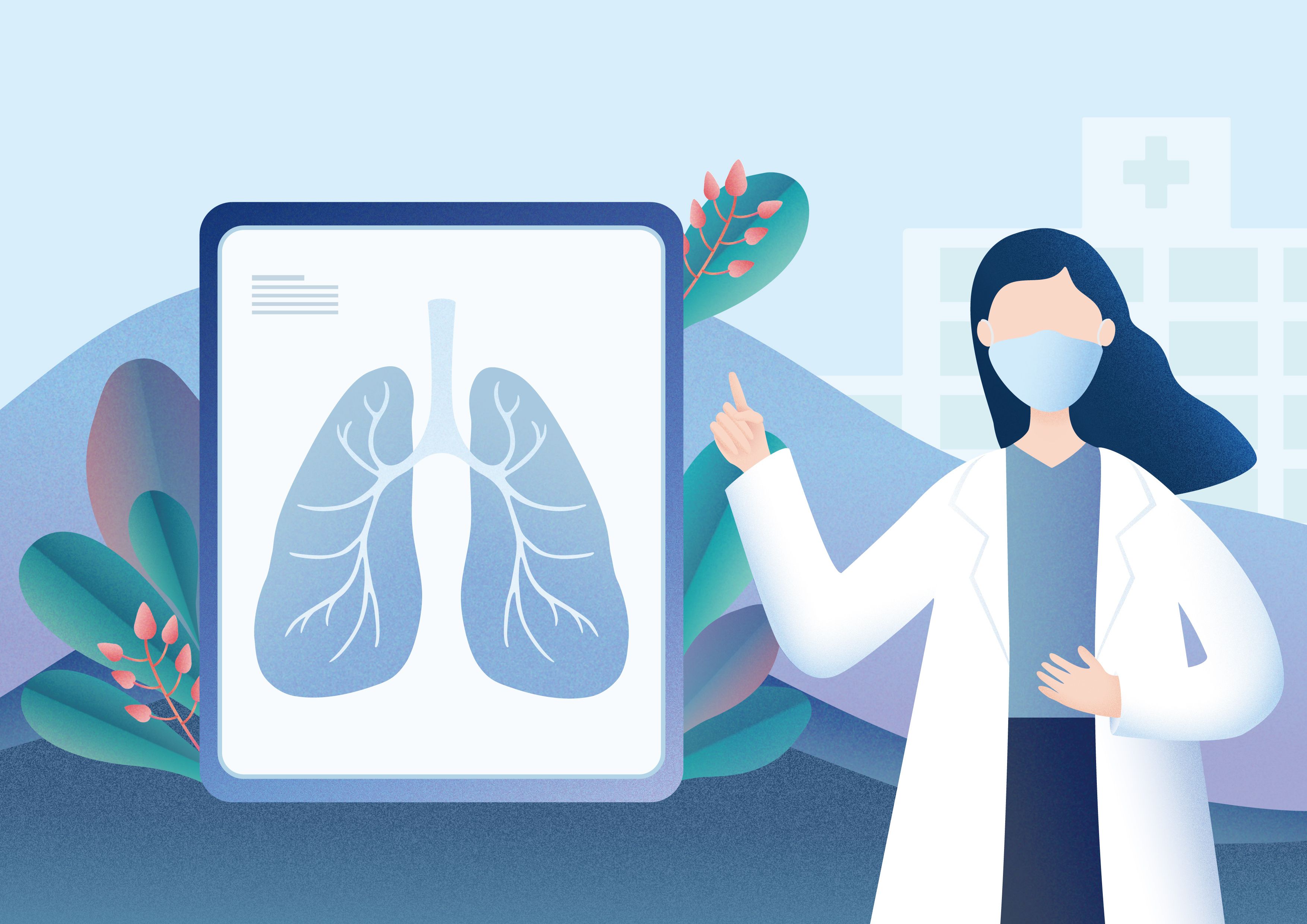Video
Early Non-Small Cell Lung Cancer and Adjuvant Therapy
Two experts detail the use of adjuvant therapy, including chemotherapy, in treating early non-small cell lung cancer.
Jessica Donington, MD, MSCR: Dr. Dietrich brought in the concept of the adjuvant therapy. Adjuvant is sometimes added — meaning it’s the therapy we give for the disease we can’t see. And sometimes, that’s a hard concept for our patients to understand. Especially if the surgeon tells them, well, I went in and I got what I was looking for. I got the tumor out. It’s all out. But there are still a large number of my patients who I signed on to receive adjuvant therapy after resection. Most of my patients who have tumors greater than 4 cm [centimeters] or have any lymph node involvement or have tumors that extend to the lining of the lung, are recommended for adjuvant therapy. For my practice, I would love to tell you that 100% of the patients are recommended to go on to adjuvant therapy. But there are things in lung cancer patients that make that challenging. Sometimes patients don’t want it. Sometimes patients are sick. Sometimes if they’ve had complications from surgery, that’s not possible. And when we look at all patients in the United States who are, who qualify for adjuvant therapy, we think only about half of them get it. I’d love to say in my practice, it was 100% of those who qualify got it but it’s probably more than 50%. It’s closer to 90%. And I start the discussion of who needs adjuvant therapy in my preoperative visits. When I discuss what the resection looks like, I talk about taking the tumor and the piece of lung that surrounds the tumor and about taking the lymph node stations. Even if they’ve been biopsied by a pulmonologist before the operation, we take them at the operation, and we take them looking for tumor cells there. And I explain to my patients from the beginning that those lymph nodes are like the gatekeepers. And if tumor cells have reached those lymph nodes, we know that there are likely tumor cells which have escaped, and we can’t see them yet. There’s somewhere outside of the lung, in the bone, the liver, or something like that. And the idea of the adjuvant therapy, the added therapy is to kill the tumor cells we can’t see. I can only go after what we can see, I need Dr. Dietrich and medical oncologist to go over the cells we can’t see. And that’s why you need a therapy that goes everywhere in your body. And that’s the whole concept. And right now, adjuvant chemotherapy is very much the standard of care and all the other therapies that we recommend are in addition to adjuvant chemotherapy. And I send almost all my patients, with stage 1b, 2 or 3a disease that have been resected and are recovered to see a medical oncologist for a discussion of adjuvant chemotherapy. It is unfortunate and somewhat heartbreaking if we have someone who’s too sick to go on to that therapy, and we try to limit that happening as few times as possible. But complications related to surgery can make that more challenging. That’s another reason that it’s important to have small incisions so that patients have faster recovery and can be ready for that discussion and the therapy if needed. Dr. Dietrich, do you want to review some of the evidence supporting the use of systemic chemotherapy?
Martin Dietrich, MD, PhD: Absolutely. We’ve had a very consistent signal since the early 2000s, in fact, that would support the use of adjuvant or added chemotherapy and follow-up to surgery. What’s been clear and that’s been learned from the metastatic space, and the regimens repeat themselves whether it is immunotherapy, targeted therapy or systemic therapy. What works in the metastatic space typically works in their early space, and typically better. Think of a tumor as a fortified infrastructure that has support connective tissue blood vessels, its own oxygen and nutrients supply, much more difficult to attack with chemotherapy than isolated microscopic cells that have no support structure. Additionally, if a body is not encumbered by a significant tumor burden, it’s typically stronger with therapy. What works in the metastatic setting typically works better in the early-stage setting. The two-drug combinations that we’re using are typically based on a medication called cisplatin. This is the precious metal platinum that is utilized as the core of this treatment. And then we have a variety of binding partners that are tailored to the individual patient’s [side] effect tolerance, kidney and liver function, and also to their histology. We know that this hasn’t changed much over the last 10 to 15 years and the data has been very consistent. Now, what we know is the higher the stage, the higher the risk, the higher the benefit for adjuvant chemotherapy. And to Dr Donington’s point, the higher the stage, the higher the frequency of being offered chemotherapy for the setting. The first data pieces are from the early 2000s. We’ve had multiple confirmatory study trials that showed this in what we call meta-analysis, or basically review of multiple trials in one setting. And even though this is not a perfect way of doing it, what we’re seeing is a consistent benefit of chemotherapy. We don’t have a question of whether chemotherapy works. And we certainly know that chemotherapy is not perfect in preventing the recurrence of cancer, but it certainly reduces the risk. Depending on the setting, it’s somewhere between 5% to 20% in a good case scenario for the reduction of therapy. We don’t know who those patients are, and there’s not a good predictive marker that would tell us this is the patient that would respond to this therapy, and we have to lean on these studies. But for your reassurance, those studies have been very consistent in their messaging that they’re helpful. The improvement in survival here, so that’s a clear cut, we still must look for a recurrence, getting scans, especially in the first couple of years, to ensure that disease doesn’t come back. Sometimes, there are opportunities for treating, again, with a localized form of therapy. Quite frequently, we have a patient that had a part of the lung removed or a lobectomy had a lymph node evaluation, maybe had chemotherapy, and then has a recurrence in the mediastinum or the center of the chest, and where lymph node recurrences may be occurring. And many people would consider localized approaches for those kind of recurrences as well followed, again, by systemic therapy in the same setting.
Transcript edited for clarity.




